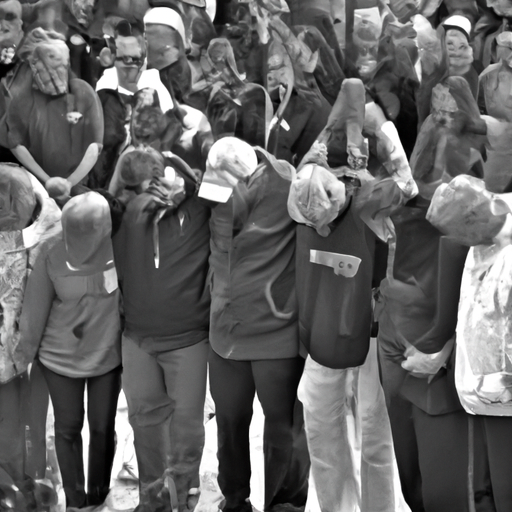The Opioid Crisis Strikes First Nations in Canada: A National Challenge Struggling to Find a Solution
The opioid crisis that has swept across Canada has brought the nation to its knees. Now it has intensified among the Indigenous communities, showing no mercy. This epidemic has taken a toll on every corner of life in these regions, from the increase in crime rates to the shocking growth of homelessness. A recent piece by APTN News sheds light on the gravity of this situation and the main challenges faced by the First Nations communities in British Columbia. (Source)
Unveiling the Harsh Reality
The communities from the West Coast have been particularly eviscerated by the opioid crisis, with opioids becoming the principal cause of death among the middle-aged population. Mothers, sons, friends, and family – it seems no one is safe from the crushing grip of opioids.
The Impact on Crime and Homelessness
Apart from the tragic death toll, the opioid crisis has driven manifold societal issues. Homelessness and crime have seen a harsh surge in recent years, mainly fueled by the plight of those caught in the stranglehold of opioids. As addiction drives individuals into desperation, communities must grapple with poverty and increased criminal activity resulting from increasing needs to support the addiction. Crime has escalated to a level that many communities are experiencing an unfamiliar threat to public safety.
The Lifesaving but Controversial Naloxone
In face of this crisis, naloxone has been highlighted as a lifesaving solution, capable of reversing overdoses. However, it has been viewed as a contentious remedy. It’s not a road to recovery, but rather a temporary fix to the immediate danger of overdosing. There are concerns that widespread availability of naloxone may enable further drug abuse rather than act as a deterrent.
Government Response and Class Actions
Responses to the opioid crisis have varied across jurisdictions. An opioid class action lawsuit has been filed, including First Nations among plaintiffs, seeking damages for the horrific impact of the opioid crisis. But this is not an immediate solution. The First Nations communities are urging for drastic, swift actions that can combat the overwhelming crisis that is debilitating their societies.
It has been agreed upon that a comprehensive and holistic approach is required to tackle this complex issue. The opioid crisis is not merely a health issue—it is a social crisis tangled in the webs of poverty, social inequality, and historical trauma.
The Future of The First Nations Amidst The Opioid Crisis
The future of the opioid crisis in First Nations communities will largely depend on the coordinated efforts of various stakeholders. This includes healthcare providers, policy makers, and the communities themselves. The development and implementation of effective prevention and treatment strategies, and the deliverance of services that are culturally sensitive are imperative to alleviate the crisis.
Key Points:
- Opioid crisis among the First Nations communities has intensified, resulting in a dramatic increase in death rates.
- The crisis has extended its reach, driving up crime rates and homelessness in these communities.
- Naloxone is viewed as a critical, but controversial tool in the fight against opioid overdose.
- An opioid class action lawsuit has been filed, involving First Nations communities among the plaintiffs.
- The future of the opioid crisis depends on coordinated efforts of stakeholders and initiatives that are conscious of cultural sensitivities.
In conclusion, the opioid crisis in the First Nations communities of British Columbia is a grave situation that calls for immediate and forceful action. The crisis, deeply rooted in socio-economic disparities and historical trauma, is far-reaching with repercussions extending to rising crime rates and homelessness. While naloxone serves as a lifesaver in overdose situations, handling the crisis from a holistic approach and considering cultural sensitivities in developing solutions seems to be the need of the hour. As the opioid class action lawsuit continues to unfold, we must keep our focus on the immediate relief required by those most affected in these communities.


